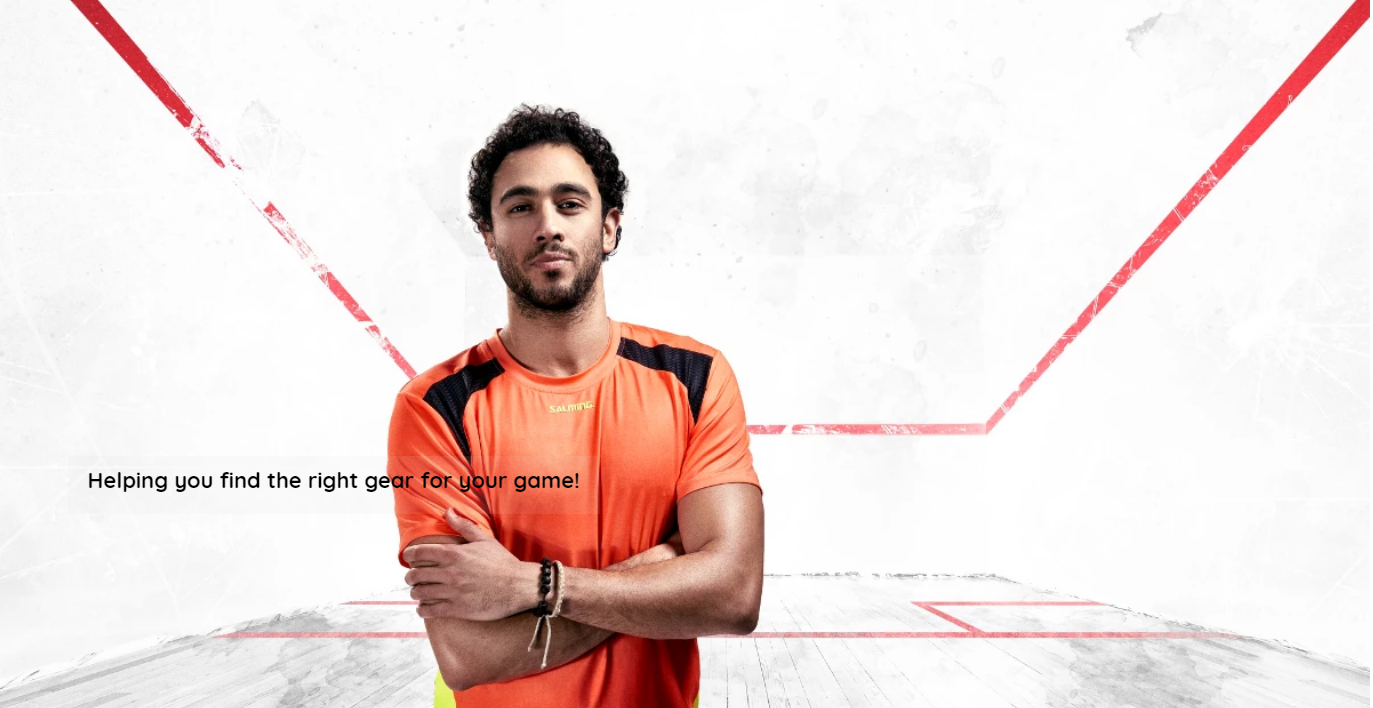Salming's Kobra are designed with performance in mind …
The Salming Kobra Indoor Court shoes are very light, very comfortable, high performance indoor court shoes.
The Kobra are widely used on the PSA Tour as such many people will have seen them or will know someone that plays in them. They are a very popular model at our club.
This post is designed to give you our take on the strengths of the Kobra and the technologies they use. We hope our review will help you decide if they are the right shoe for you.
After the review of the Kobra you will find the a section where we cover the technologies that Salming has incorporated in the Kobra. In that section we cover Salming's description of each technology and also provide our take on them too.
SALMING KOBRA

|
Technologies Included in the Kobra:
|
Here is what Salming has to say about the Kobra:
“The Salming Kobra is a fast paced unique combination of lightweight, cushioning and stability. Together with all the unique Salming technologies, Kobra is wrapped up into one agile shoe.
A new Wrap Around System Design (WAS Design)
In order to facilitate agility and stability but still maintain the lightweight characteristics, we have designed the midsole rear end with higher side walls that wrap around the heel area. In combination with the LMS Plus 8° and the new fully integrated ExoSkeleton construction, it ensures an excellent stability and perfect fit.”
Our take:
The Salming Kobra are Salming’s top of line shoe in terms of both technology and price point. The Kobra provide excellent lateral support, cushioning that helps with comfort and performance, and are extremely light weight and breathable.
The Kobra provide exceptional lateral support and stability. It is one of the first things I noticed when I played in a pair. They are incredibly stable shoes. Before I play I do a stretch lunge exercise. As I am lunging quite far forward I find this to be a good gauge on how much stability the shoe will provide. The first time I tried them I was impressed with the stability provided.
The technologies that Salming has incorporated in the Kobra to achieve such good stability and lateral support are the EXOSKELETON, LMS, LMS+ and a new Wrap Around Design (WAS) system. These technologies work together to provide optimal stability to this light weight shoe.
The WAS system is an enhancement to the EXOSKELETON and is only found in the Kobra line. The EXOSKELETON on the Kobra integrates right in to the loop for the laces that keeps the foot locked in place and provides excellent strength and stability to the Kobra.
Salming uses RECOIL and RECOIL R foam to provide cushioning to the shoes. The RECOIL foam in the forefoot area not only does a great job of absorbing shock, it also transfers energy back to the player to give some additional spring to your movement.
The Kobra might look like they are a bulky/heavy shoe but they are anything but that. They are actually the lightest model from Salming. I believe that is a pretty incredible accomplishment for Salming given just how supportive they are.
The Kobra are geared towards the player looking for the latest and greatest in technology in an indoor court shoe to really take their game to the next level. They provide incredible performance and good cushioning.

SALMING TECHNOLOGIES
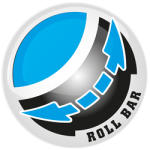
|
ROLLBAR
Salming's description: "An increased radius on the inner side of the outer sole, facilitates rolling the foot inwards and toe push off. Reaching for that stop ball in squash or covering a shot in floorball is made easier with the RollBar™ technology."
Our take: The key benefit of the Rollbar technology is the aid it provides in pushing off towards the ball. When you dig your foot in to the court to push forwards, Rollbar allows the foot to work inwards towards the toe to provide better push off. Additionally, the shoes are very firm in in the toe area to maximize energy transferred to the court and provide the best possible drive.
|
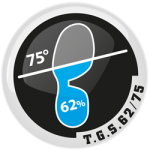 |
T.G.S. 62/75
Salming's description: "Torsion Guide System. The distance from heel to the ball of the foot (62% of the shoe) has been designed with extra stability, which ends in the so-called ”ballet” line, a 75° angle. In front of the 75° line, we have equipped the shoe with greater flexibility to stimulate the foot’s natural movements. TGS 62/75 takes all of the gait cycle criteria into consideration. At the same time, it softens the strains caused by friction during lateral movements. The shoe bends in exactly the right places, stimulating the foot’s natural lateral and forward movements."
Our take: The back portion of the shoe is firmer and designed to improve balance and stability. The forefoot area of the shoe has been designed to allow more freedom of movement to allow your foot to move and perform naturally. The split comes at the ballet line. If you were to drive your heels up off the floor so that your weight is on your forefoot area the "ballet line" is where your foot would leave the floor. It is also where Salming has designed the shoes to flex. The front part of the shoe is more flexible. The back 62% of the shoe is firmer to provide maximum stability.
|
 |
EXOSKELETON
Salming's description: "The exo skeleton design stabilizes the foot for lateral movements and reduces pressure at the MTP joints (Metatarsophalangeal joints). It is important to keep the foot stable medio-lateral, avoiding friction and side forces in the soft parts of the foot sole, especially underneath the forefoot."
Our take: This is one of the key components of Salming's shoes. The shoes that feature the EXOSKELETON design are largely made of mesh. The EXOSKELETON provides the necessary support to the shoe. The EXOSKELETON is the little bands that come up from under the foot then around the foot and in to the lacing area of the shoe. They are very light but very solid and keep your foot in place inside the shoe. This is a critical component in lateral support as if you foot starts to slip outwards when planting the foot on a lateral movement your weight will start to transfer outwards and this increases the risk of injury. It also decreases performance.
|
 |
ERGO HEELCUP
Salming's description: "To stabilize and fixate the heel, which is key to providing a great fit and comfort, we have developed a new anatomical Ergo Heel Cup that is slightly longer than the average heel cup."
Our take: Salming's description is clear and it is also very accurate. The Ergo Heel Cup helps keep your heel locked in place in the back of the shoe to prevent it from slipping upwards. This keeps the back of your foot from rubbing against the shoe and prevents blisters.
|
 |
HEXAGRIP
Salming's description: "A new very durable lightweight rubber compound - HX120 - that features Salmings HexaGrip™ pattern designed for the best possible grip on all indoor surfaces."
Our take: Hexagrip was first introduced in the Kobra series. It is an update to the rubber that they use on the outsole of the shoe. The rubber is formed in a hexa pattern, a 6 sided pattern to provide the best possible grip to the court. HexaGrip provides incredible traction. To maximize your movement you need your court shoes to have the best grip possible and HexaGrip is exceptional. Good grip on the court is also important from an injury prevention perspective as if you slip on the lunge you risk tearing muscles. Salming XR112 with HexaGrip is their top of the line outsole material.
|
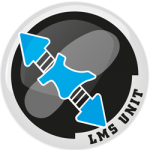 |
LMS
Salming description: "Lateral Movement Stabilizer - an especially designed light weight integrated dual torsion unit that supports the foot during fast and irregular lateral movements."
Our take: Lateral stability is one of the key performance and safety components in a shoe designed for squash. There is a lot of lateral movement in squash with the need to change directions quickly. Salming's LMS provides torsional stability to the shoe in its mid section. That helps prevent your foot from rolling outwards when planting your foot to change direction. This reduces the risk of injury (rolling your ankle) and allows you to change directions as quickly as possible.
|
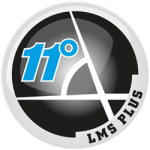 |
LMS+ 8°
Salming's description: "Fast lateral stops expose the foot to the risk to roll over outwards, causing injuries. LMS+ (Lateral Movement Stabilizer Plus) is a unique design with a positive angle of 11° that prevents the foot from rolling over outwards."
Our take: LMS+ compliments the LMS system to provide lateral stability in the shoe. The 8° angle refers to the angle from the lateral (outside) side of the foot to the medial (inside) side of the foot. There is an 8 degree angle with the lateral side being higher than the medial side. That angle keeps your weight inwards and helps to prevent your foot from rolling outwards.
|
 |
RECOIL™ + RECOIL R™
Salming's description: "The material in the midsole is a newly developed compound named RECOIL™ which is a super lightweight cushioning compound that releases a higher rebound energy effect. The Recoil R™ - as in Recoil Reduction - is a cushioning compound featured in the heel impact zone designed to reduce impact forces and increase comfort when lunging."
Our take: In the mid to forefoot area of the shoe Salming has used a RECOIL foam system. The RECOIL foam will absorb shock but it also transfers energy back in to the foot to add more spring to your movement. It’s a smart design that provides comfort and aids in performance. Under the heel RECOIL R is used to absorb shock. As squash is mostly a heel strike first movement there is a lot of impact under the heel and RECOIL R is designed to protect the foot from that.
|










